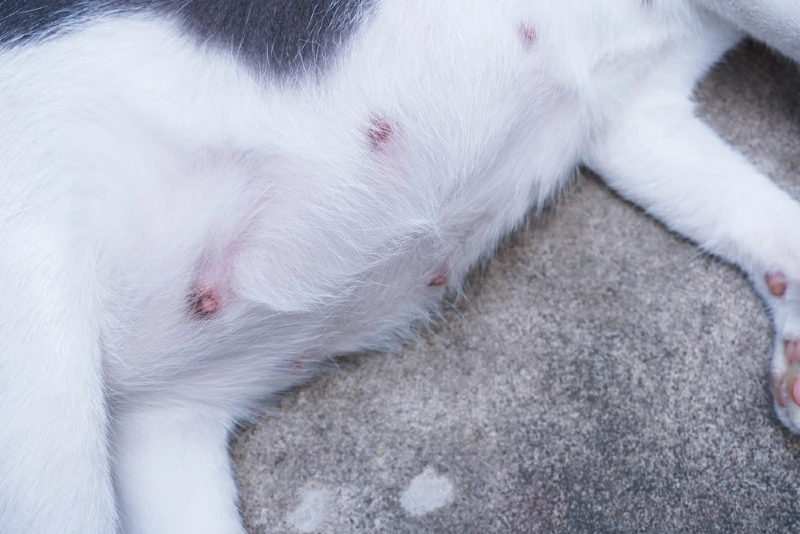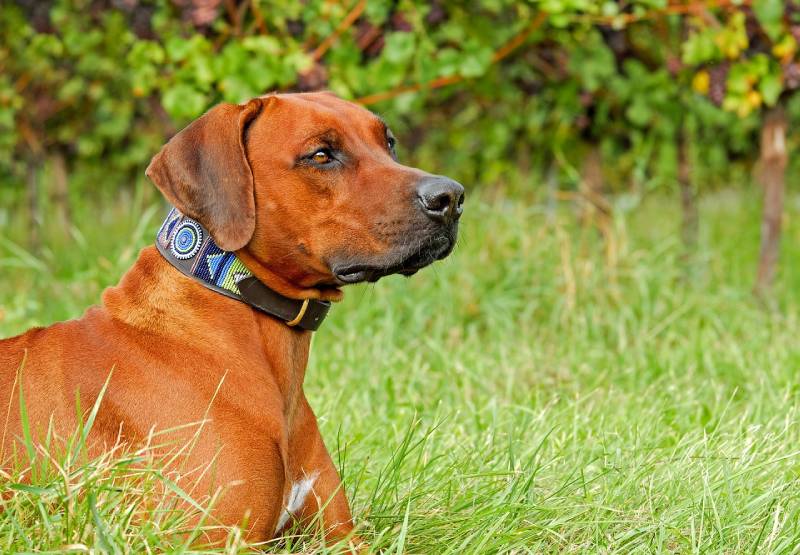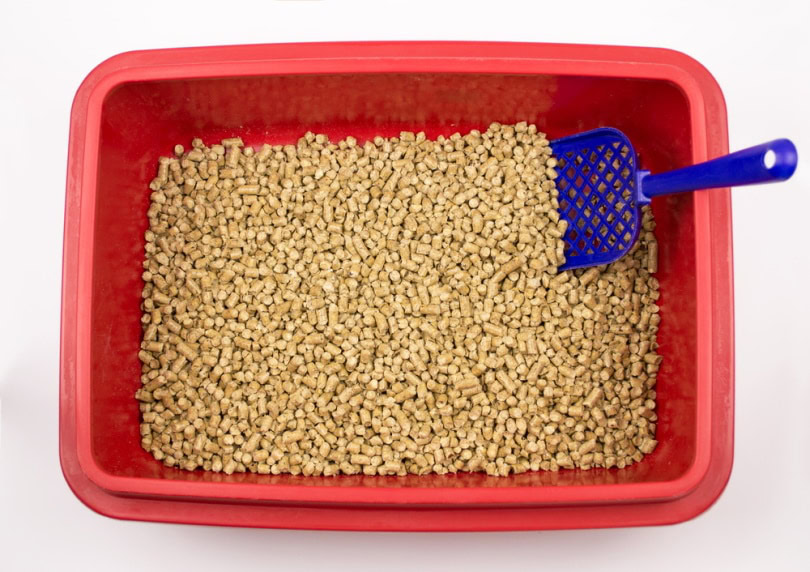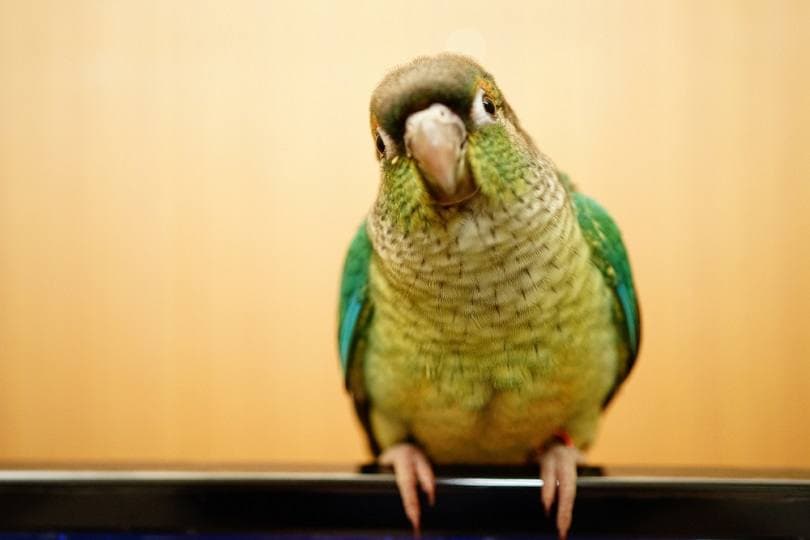VET APPROVED

The information is current and up-to-date in accordance with the latest veterinarian research.
Learn more »Click to Skip Ahead
Cats are adorable, independent creatures known for their curiosity and playful nature. But did you know that cats have more nipples than other animals? It’s true! In fact, cats typically have 6 to 8 nipples along the belly and chest area. Let’s learn more about a cat’s nipples and why they have so many.

Why Do Cats Have So Many Nipples?
A larger number of nipples means that a litter of kittens can feed simultaneously, which helps the mother cat ensure that each kitten is properly fed.
How Are Nipples Used?
The main purpose of a cat’s nipples is to nurse kittens. Milk is produced in the mammary gland, and nipples are the perfect delivery system.
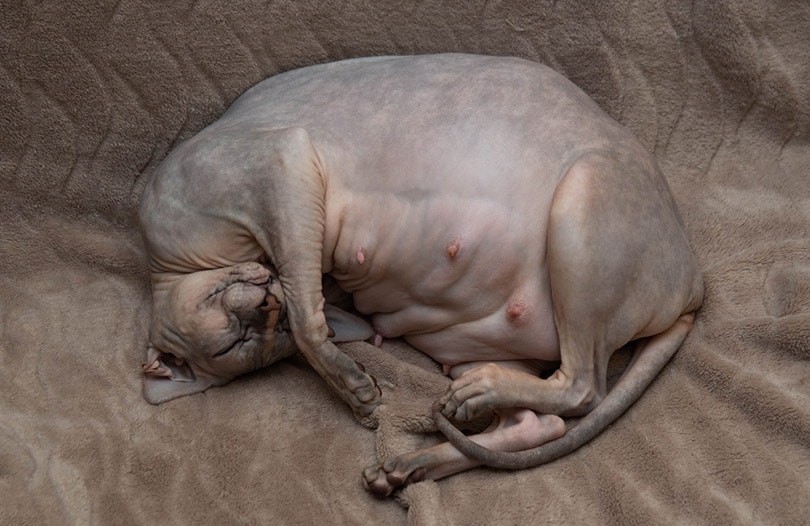
Why Do Male Cats Have Nipples?
Male cats also have nipples, even though they typically do not produce milk or nurse kittens. This is likely because the nipples develop during gestation, meaning all cats develop nipples in the womb before their sex characteristics determine if they will be male or female.
Can Cats Have Extra Nipples, Like Humans Can?
In some cases, cats may even develop extra nipples – known as “supernumerary nipples”. These extra nipples are usually located along the cat’s chest, following the “milk line” down towards the groin.
It’s important to remember that cats can have varying numbers of nipples, and supernumerary nipples are not a cause of concern.
However, if you do see something concerning about your cat’s nipples (like bleeding, cracking, or hanging down when not nursing), it’s always a good idea to speak with a veterinarian.

Cat Nipple FAQs
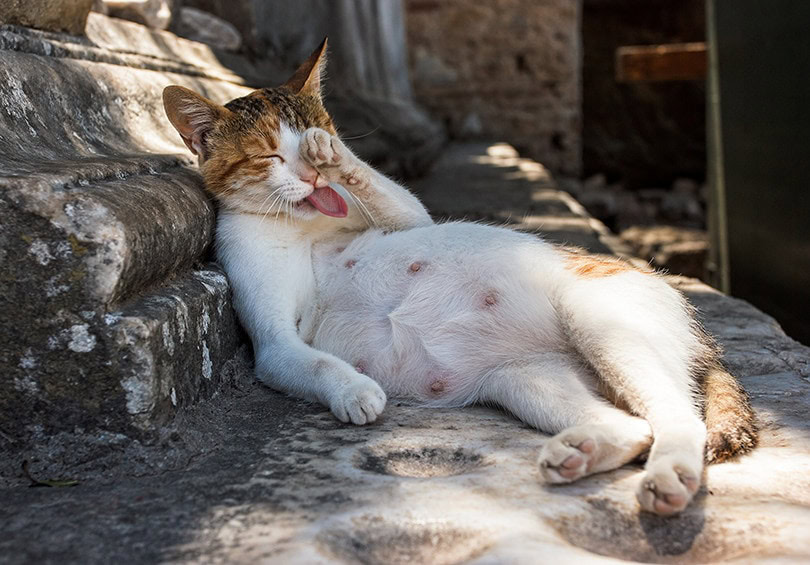
Q: Why do some cats have fewer or more nipples than others?
A: Cats can often have varying numbers of nipples depending on their breed or age.
Q: What should I do if my cat has extra nipples?
A: Nothing, extra nipples are harmless and don’t require treatment.
Q: Does spaying or neutering affect my cat’s nipples?
A: Spaying or neutering a cat won’t typically have any effect on their nipples.
Q: Do cats lose their nipples after they stop nursing their young?
A: No, cats usually retain all of the nipples they developed in utero, even after they have stopped nursing.
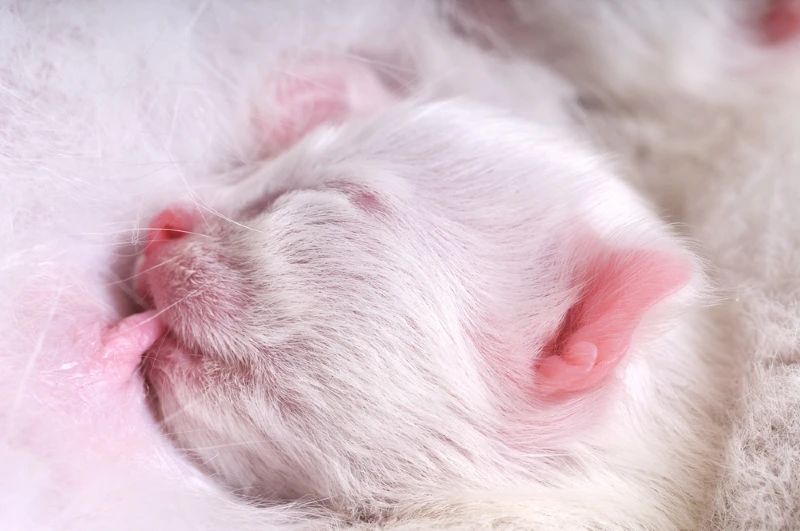
Q: Should I be concerned if my cat has stopped feeding its kittens from its nipples?
A: If your cat is not producing enough milk to feed its kittens, you should take it to the veterinarian for an evaluation.
Q: Are male and female kitten’s nipples different sizes?
A: Generally, male and female kitten’s nipples are the same size. However, this can vary depending on the breed or age of the cat.
Q: Is it normal for my cat’s nipples to be large and hanging?
A: It is normal for a nursing mother cat’s nipples to become enlarged and hang lower than usual. This is because the extra strain of lactation causes them to swell, but they should return to their original size once the cat stops producing milk. Again, large, hanging nipples in a cat that isn’t nursing may require a trip to the vet to determine the cause.
Q: What if a cat has more kittens than nipples?
A: If a cat has more kittens than nipples, it is important to provide proper nutrition and care for the mother cat and all of its kittens. You will need to keep a close eye on each kitten’s nursing and consider supplementing feedings using a bottle or syringe and a cat milk replacer formula to ensure all kittens have healthy development and proper nutrition.
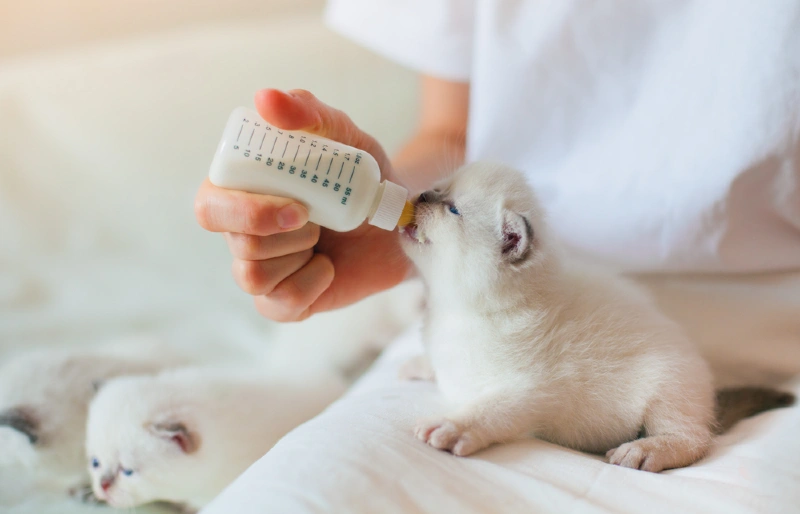
Q: Can kittens breastfeed from any cat or just their moms?
A: Kittens should only breastfeed from their own mother if possible. That being said, in cases where a mother kitten has died, becomes sick, or abandons her kittens, they can be fed by another lactating cat as long as the cat is healthy. In many cases, the new cat will adopt and raise the kitten.
Q: What should I do if my cat’s nipples are bleeding?
A: Bleeding nipples can be a sign of an underlying health issue, so it’s important to take your cat to the veterinarian for an evaluation. Treatment options may include medication, topical ointments, or other remedies depending on the cause of the bleeding.
In some cases, surgery may be necessary if the nipples are severely damaged. It is important to seek medical attention as soon as possible in order to prevent any further complications.
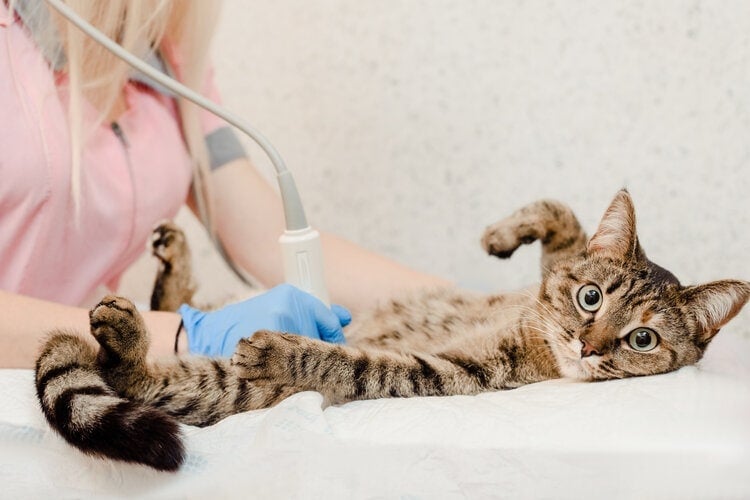
Q: How long do cats nurse their kittens?
A: Cats typically nurse their young for about 8-12 weeks. During the first few weeks, the mother cat produces colostrum for her kittens which is packed full of vitamins and antibodies to help them fight off infections. After this, she will begin producing regular milk that provides all the necessary nutrition for the kittens to grow and thrive. During this time, the mother cat needs to be provided with plenty of food, water, and love so she can continue producing enough milk for her kittens. Once the kittens have weaned from their mother’s nipples, they should be given solid foods in order to receive the nutrition they need.
Q: Can cats produce milk for more than one litter of kittens?
A: Yes, cats are capable of producing milk for multiple litters. However, it is important to note that the quantity and quality of the milk may be reduced in each successive litter. This is because the mother cat’s body may become depleted of essential nutrients and energy in order to produce milk for her kittens.
Therefore, it is important to provide plenty of nourishing food and water so that she can continue producing enough milk for all of her litters. Additionally, the mother cat should be given plenty of rest and love in order to keep up with the demands of raising multiple litters.
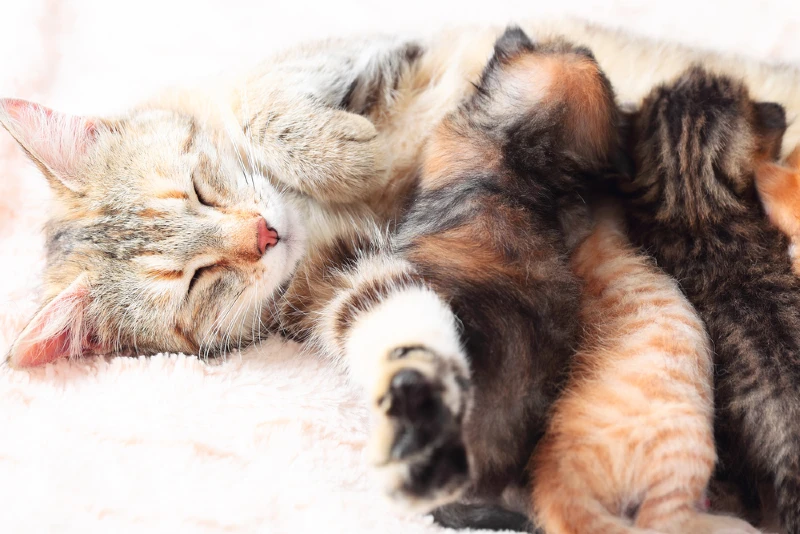
Q: Is it normal for a cat to have discolored nipples?
A: Yes, it is normal for a cat’s nipples to become discolored during lactation. This can be caused by hormonal changes in the body or due to the extra strain of nursing multiple kittens. The discoloration should go away once the cat stops nursing and returns to its normal hormone levels.
Q: What is the best way to care for a nursing mother cat’s nipples?
A: It is important to provide plenty of nourishing food and water in order to maintain a healthy milk supply. Additionally, just keep a close eye to ensure the mother cat is healthy and her nipples are in good condition.
It is important to make sure that the mother cat is getting enough fluids and proper nutrition. If necessary, help her nipples stay clean by gently wiping them with a warm, damp cloth, and making sure they don’t become cracked or sore. If the nipple looks inflamed, irritated, cracked, or red, please get in touch with the vet for further instructions.

Conclusion
Cats have many unique features that make them uniquely suited for life in the wild. Their large number of nipples is just one example of how cats have evolved to survive and thrive. So, next time you see a cute kitty, take notice — there are probably more nipples than meets the eye!
Featured Image Credit: MR.RAWIN TANPIN, Shutterstock
